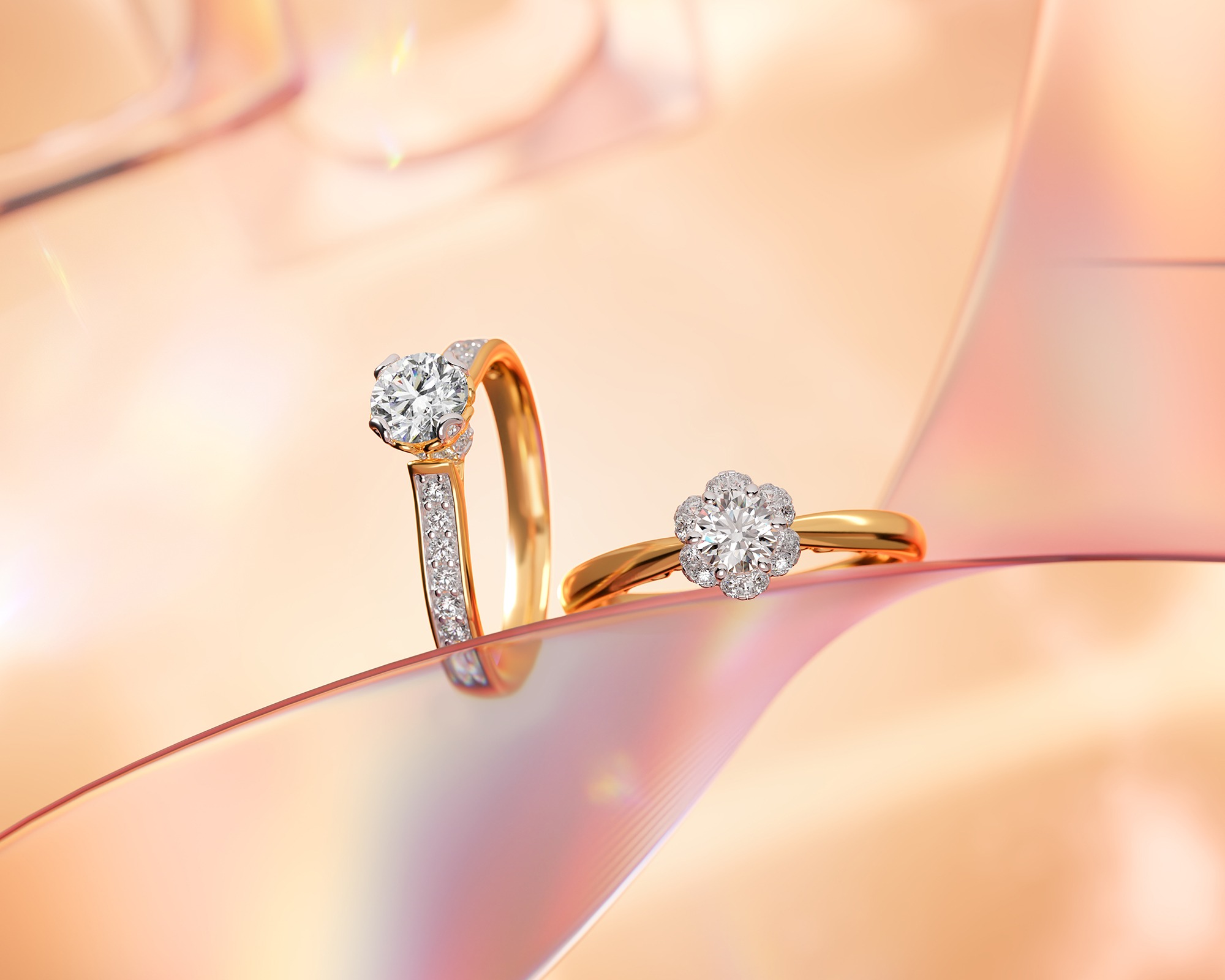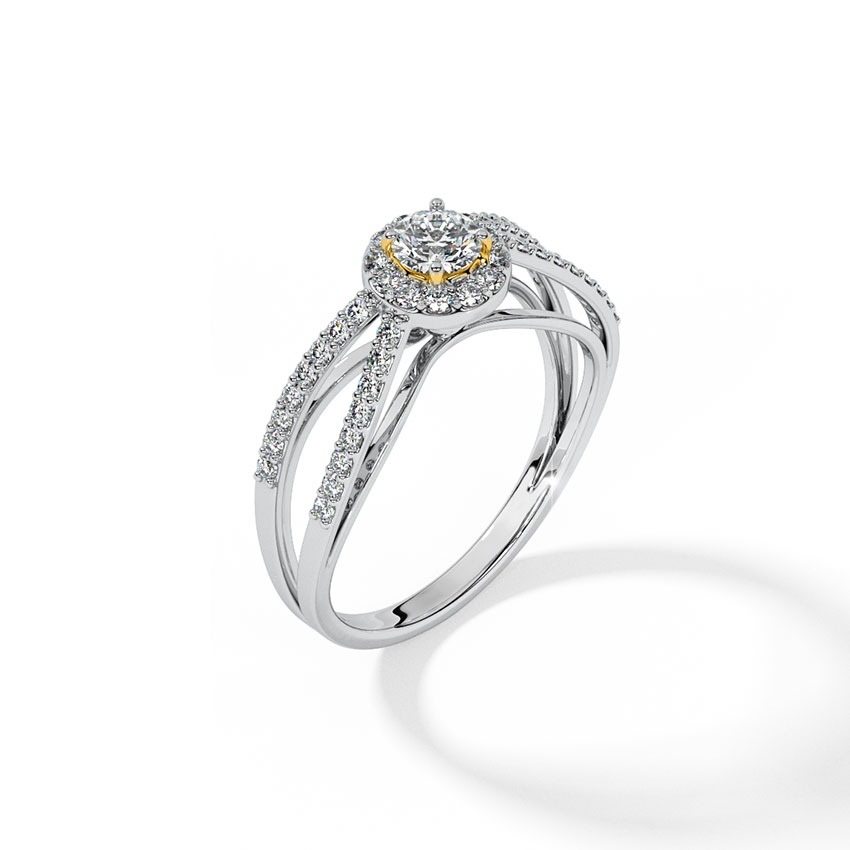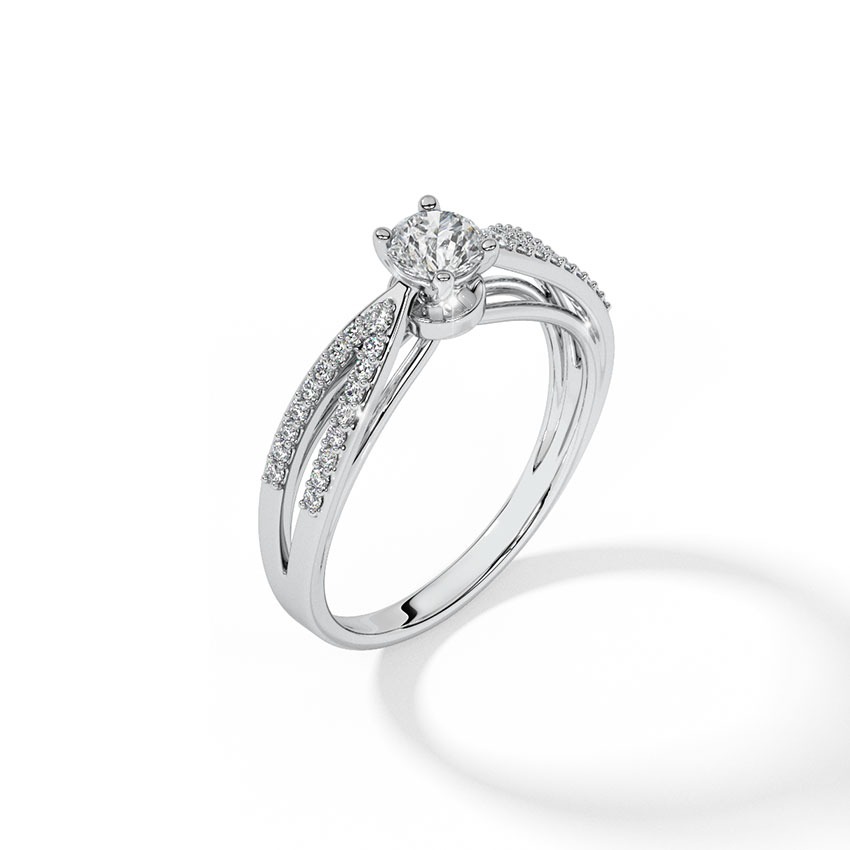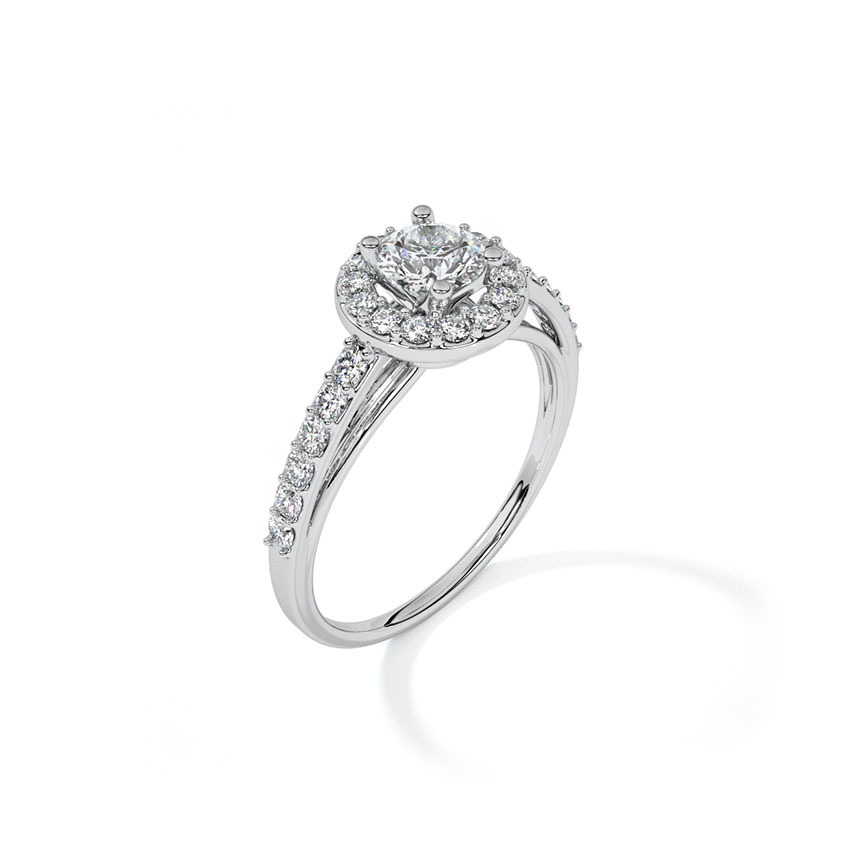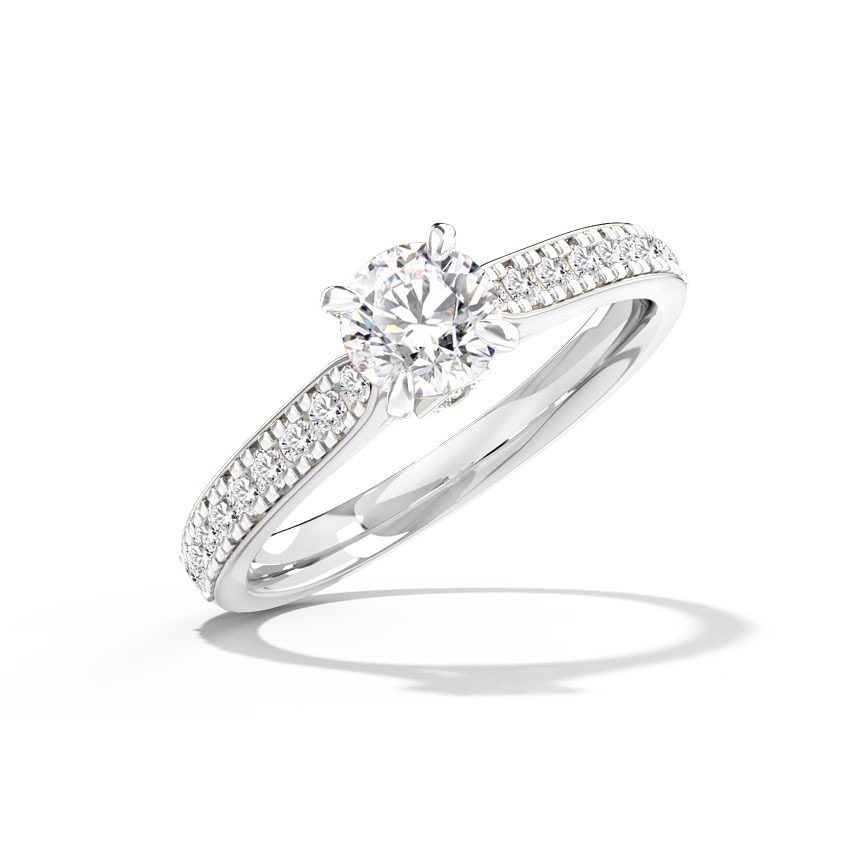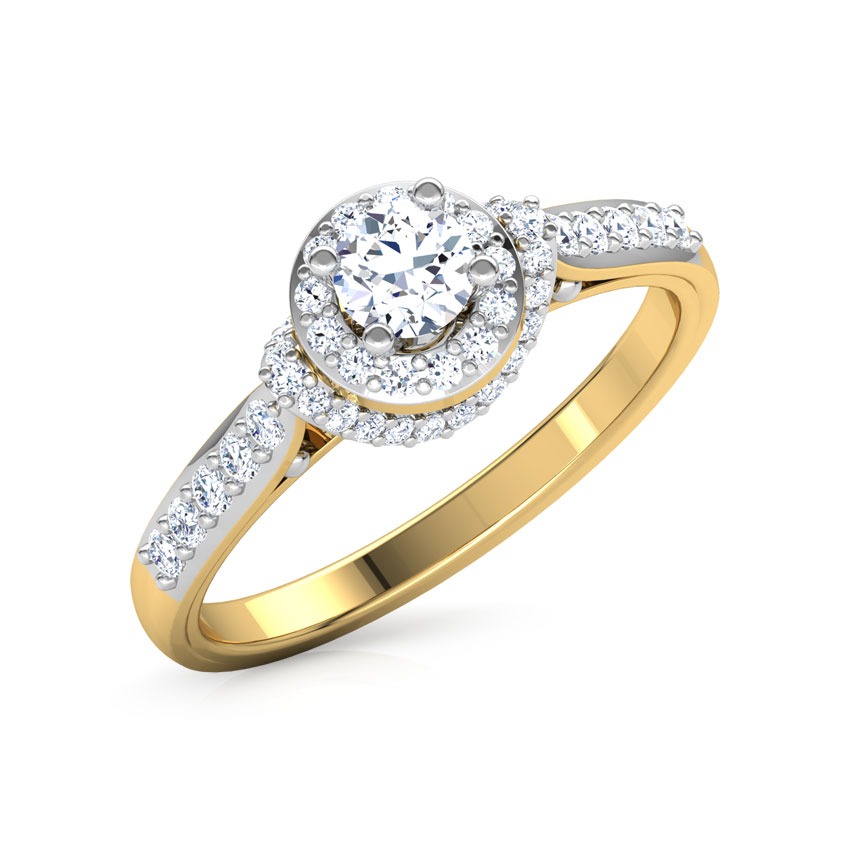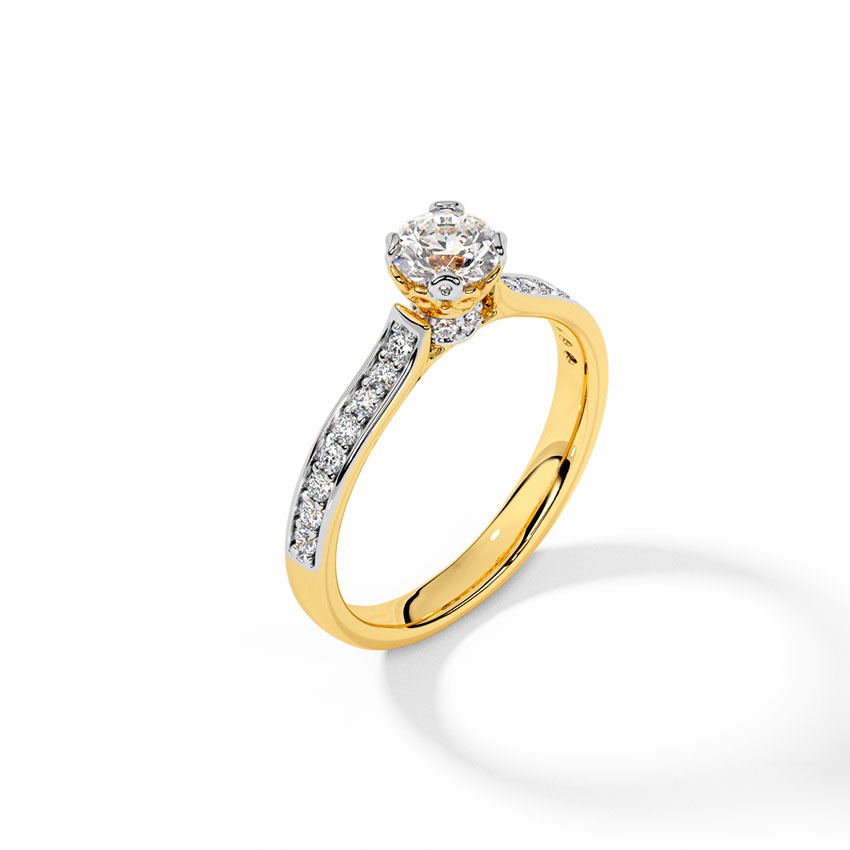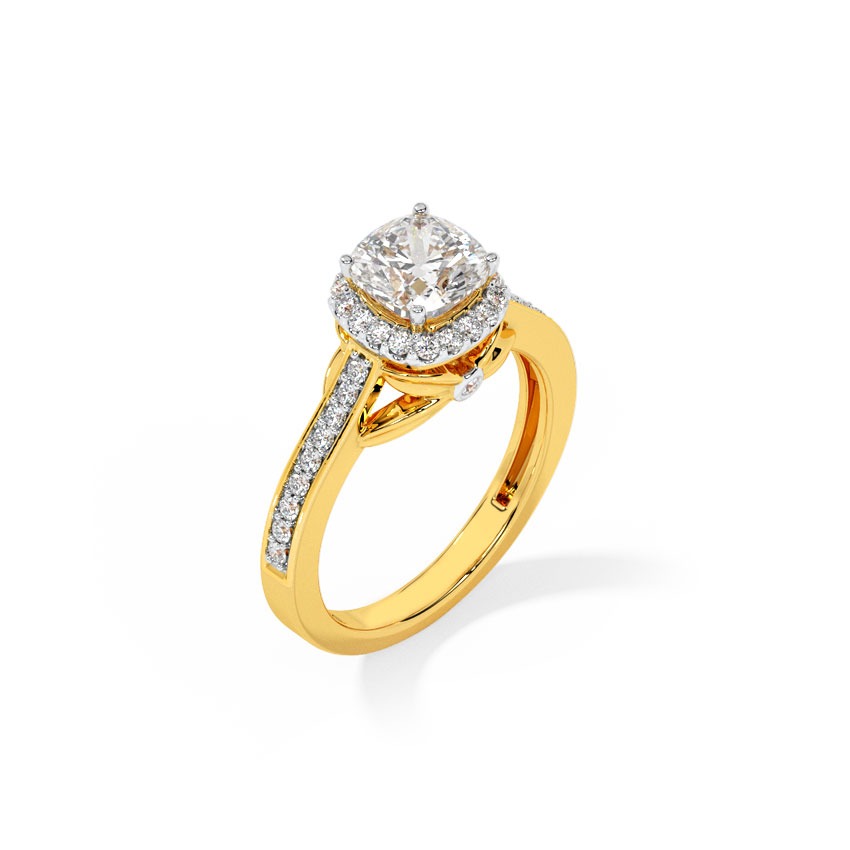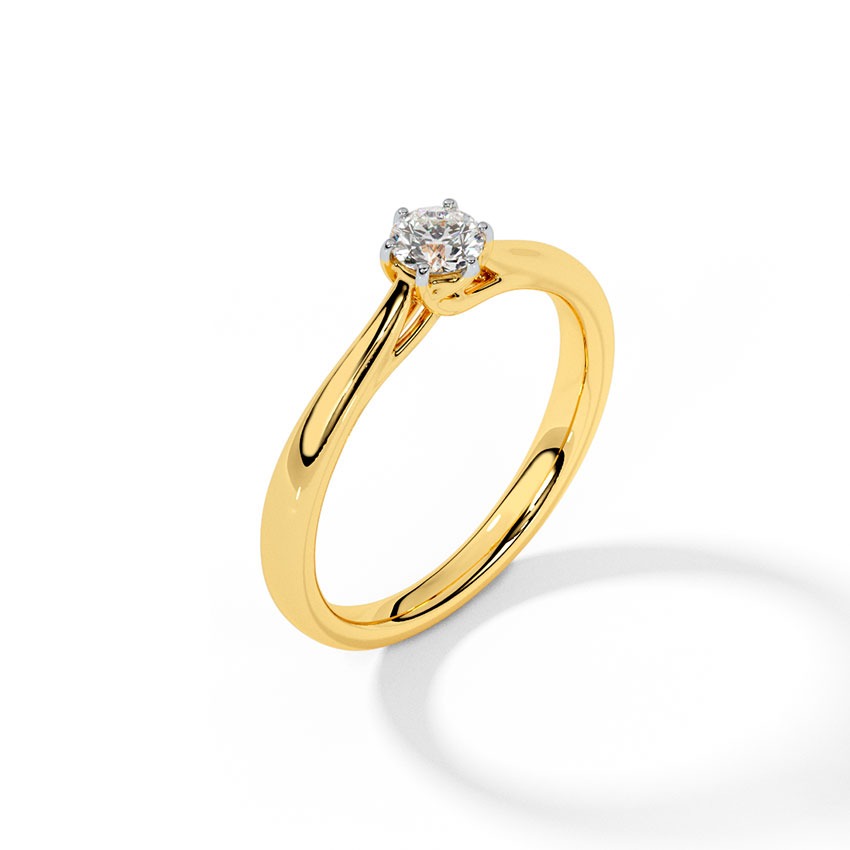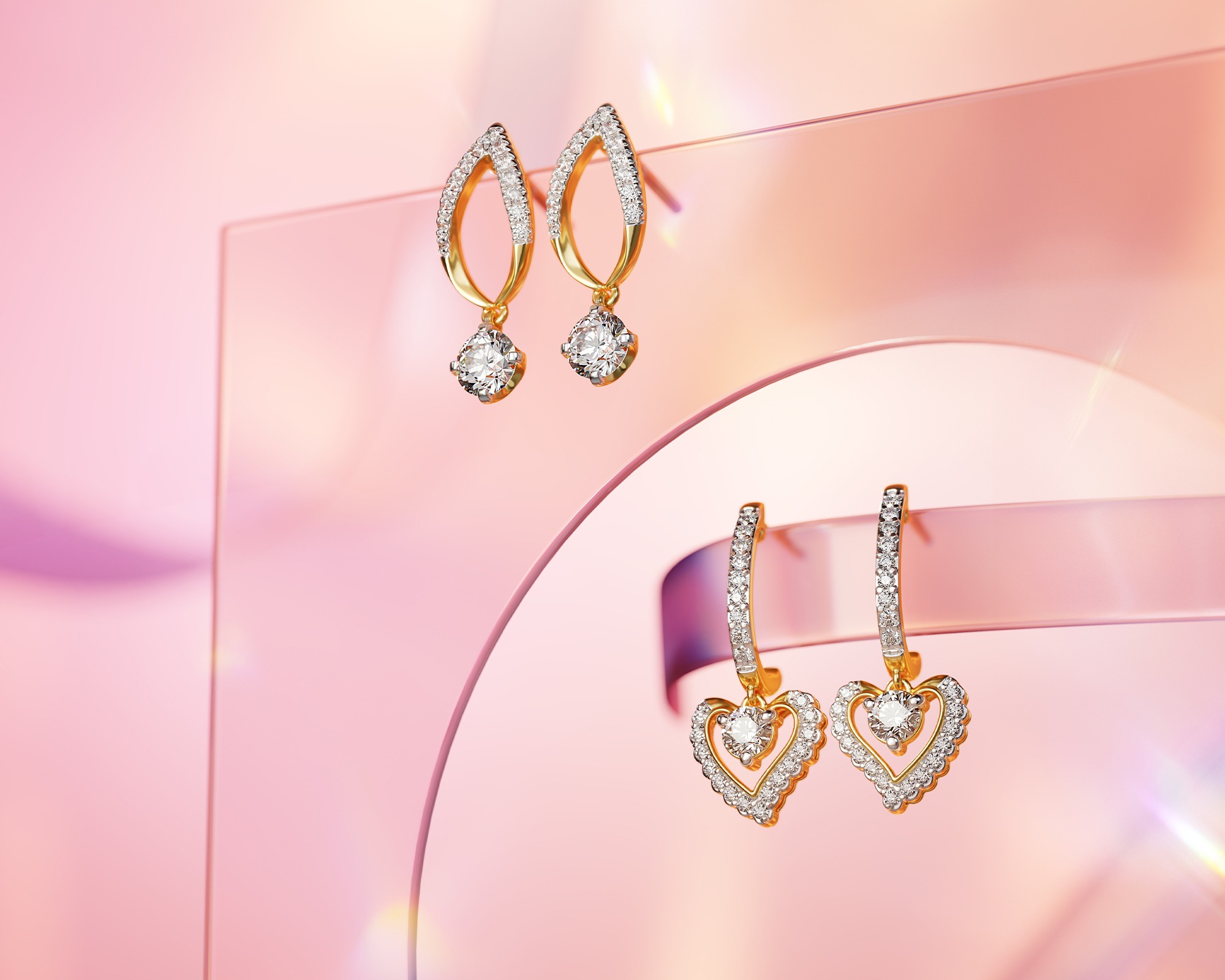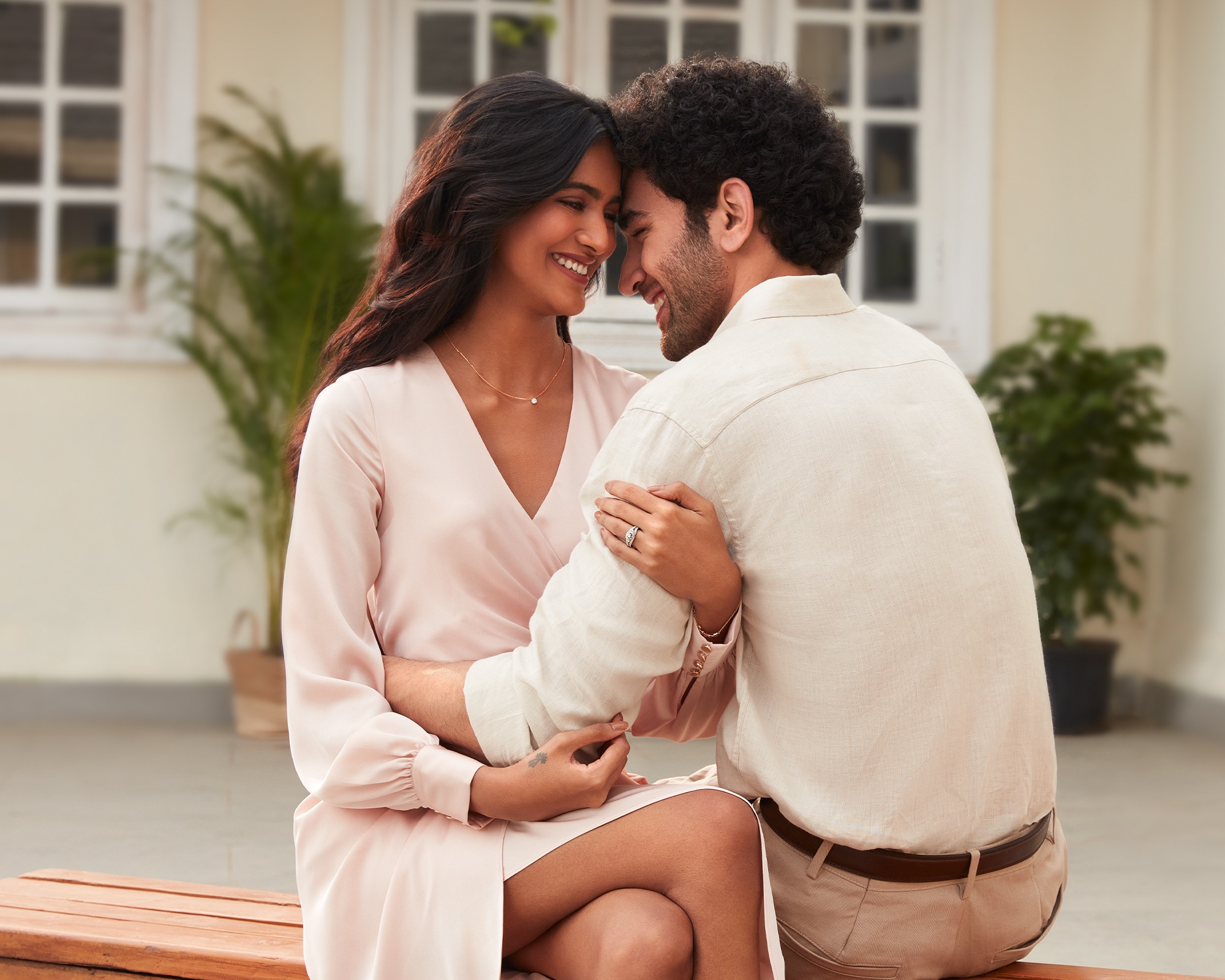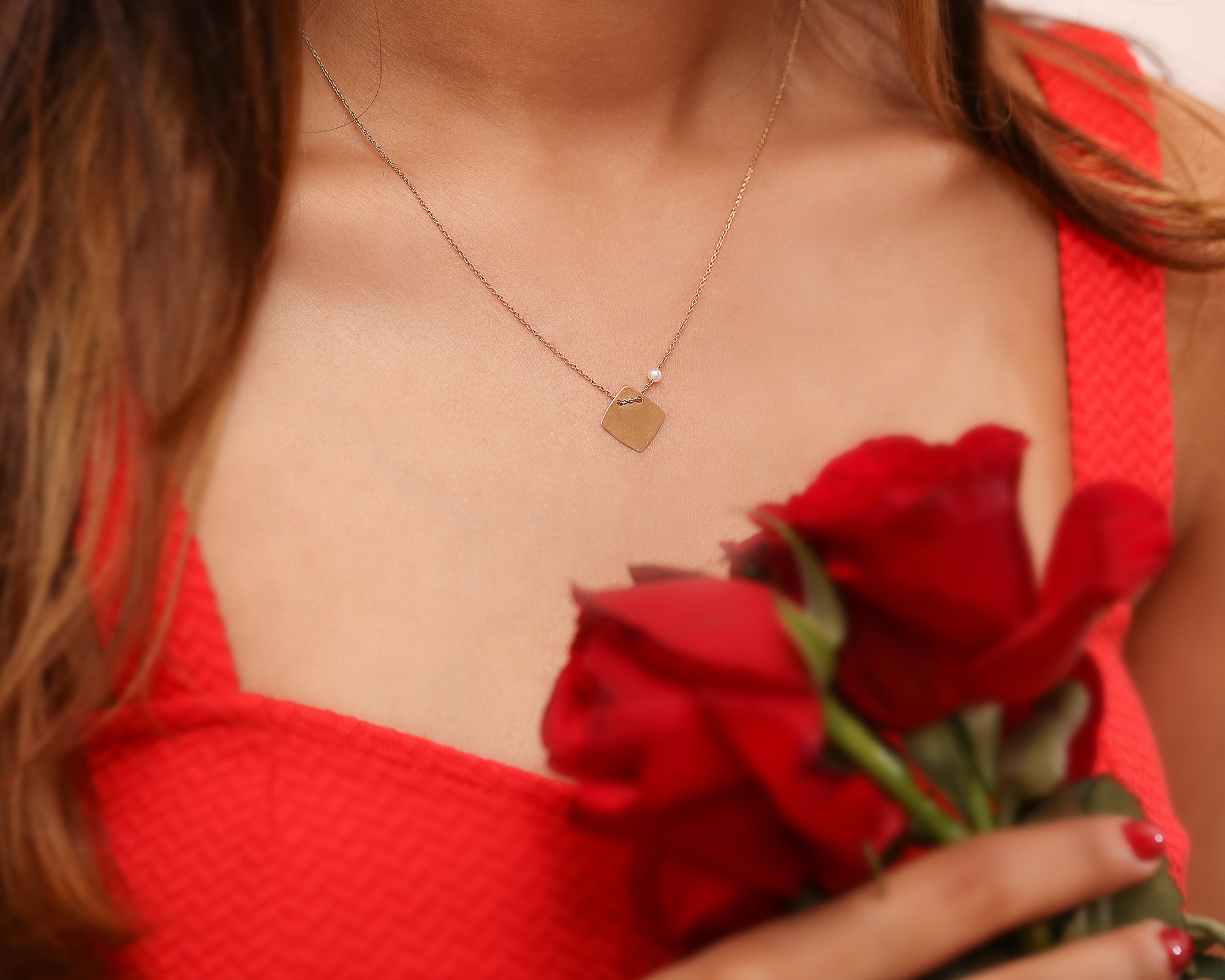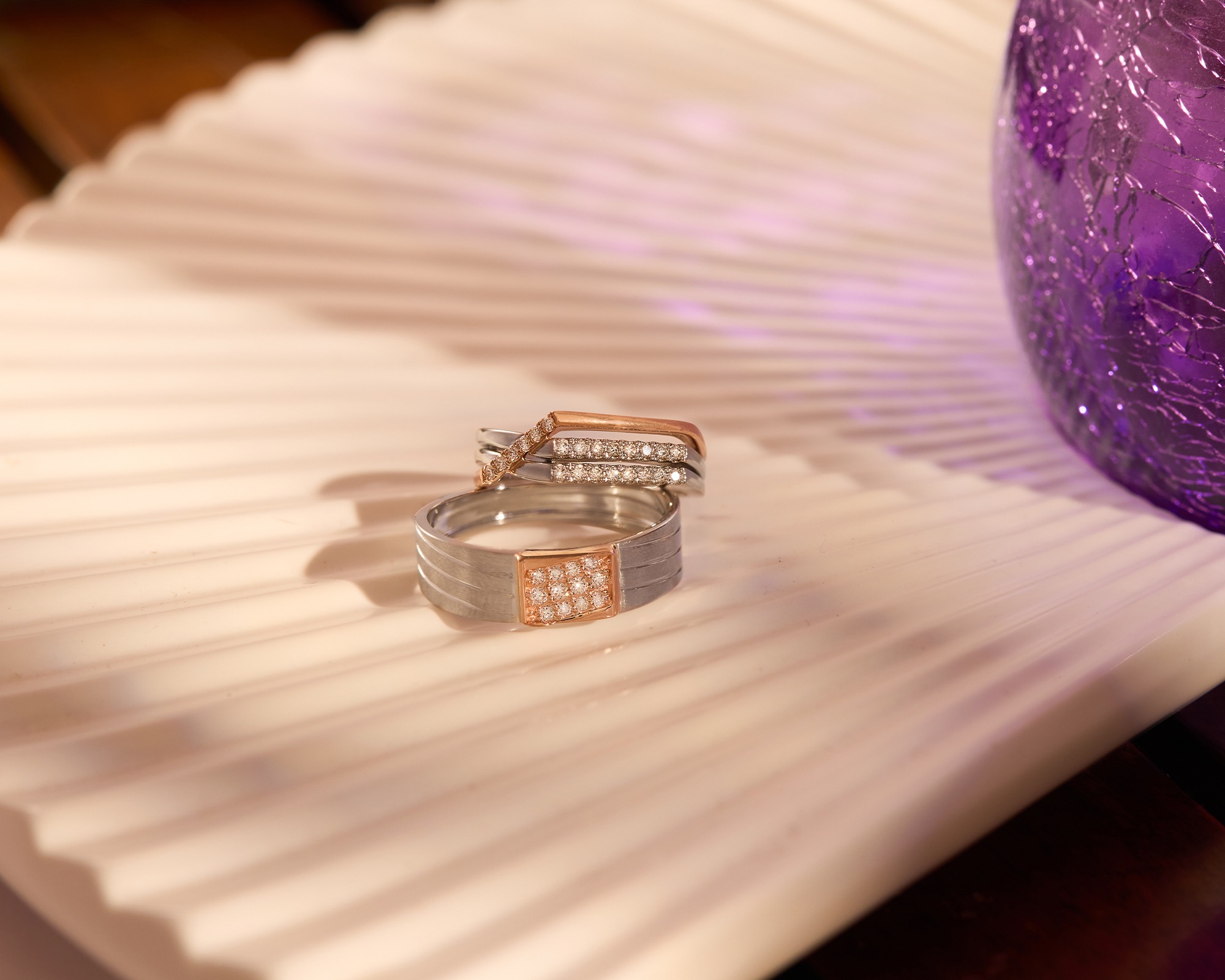An engagement ring is all about love, commitment, and the promise of a shared future. Among the many styles available, the solitaire engagement ring remains the most popular choice for its timeless elegance and simplicity. But what exactly is a solitaire engagement ring, and why has it retained its position over the years?
A solitaire ring has a single, stunning diamond (or another gemstone) set on a simple band, allowing the gem to take centre stage. This minimalist design has been cherished for showcasing the stone’s beauty without distraction. The solitaire ring’s history dates back centuries, with its popularity skyrocketing in the 20th century, thanks in part to the famous De Beers campaign that declared, “A diamond is forever.” This classic style has endured through changing trends, proving that sometimes, less is indeed more.
Don’t miss: CaratLane’s Latest Collection Of Stunning Solitaire Rings
The 4 Cs of Diamonds
Understanding the 4 Cs—Cut, Clarity, Color, and Carat—is essential when purchasing a solitaire engagement ring. These factors determine a diamond’s quality and value, and understanding them will help you make your final choice.
Cut
The diamond’s cut is defined by how it is faceted and shaped. It directly impacts the diamond’s brilliance and sparkle. A well-cut diamond reflects light brilliantly and creates that iconic sparkle. For instance, CaratLane’s Glee Round Solitaire Ring is a perfect example of how a well-cut diamond can make a simple design truly breathtaking. Whether you prefer a round, princess, or emerald cut, it’s important to prioritise cut quality to ensure your diamond shines brilliantly.
Clarity
Clarity determines the presence of internal flaws (inclusions) or external blemishes in a diamond. While no diamond is entirely free of imperfections, those with fewer inclusions are more valuable and rare. When shopping, consider diamonds like the Taj Amaze Solitaire Ring, which features a high-clarity diamond, ensuring a clear and captivating appearance.
Colour
Diamond colour is graded from D (colourless) to Z (light yellow or brown). Colourless diamonds are the most desirable, allowing maximum light to pass through, enhancing their brilliance. However, near-colourless diamonds (graded G-H) can offer an outstanding balance of beauty and value. The Tess Classic Solitaire Ring is a stunning example of a near-colourless diamond with excellent sparkle.
Carat
Carat refers to the diamond’s weight, with one carat equaling 0.2 grams. While carat weight often impacts the price, balancing size with the other Cs is crucial to finding the best diamond for your budget. For those looking for a slightly larger stone, the Queen of Diamonds Solitaire Ring provides a beautiful balance of carat weight and overall quality, making it a standout choice.

Choosing the Right Metal
The metal you choose for your solitaire engagement ring’s band is just as important as the diamond itself.
It sets the tone for the ring and influences its overall style and durability.
Gold (Yellow, White, Rose)
Gold is always a classic choice for engagement rings in yellow, white, and rose hues. Yellow gold offers a traditional and warm look, as in the Glee Princess Solitaire Ring. White gold provides a modern and sleek appearance, as in the Sparkle & Swirl Solitaire Ring, and rose gold delivers a romantic and vintage feel, as in the Adara Solitaire Ring.
Platinum
Platinum is a popular choice for those who prefer a durable, hypoallergenic metal. Its naturally white sheen enhances the diamond’s brilliance, making it a perfect choice for a solitaire setting. The Enchant Platinum Solitaire Ringexemplifies how platinum’s durability and lustre can create a lasting and elegant engagement ring.
It sets the tone for the ring and influences its overall style and durability.
Gold (Yellow, White, Rose)
Gold is always a classic choice for engagement rings in yellow, white, and rose hues. Yellow gold offers a traditional and warm look, as in the Glee Princess Solitaire Ring. White gold provides a modern and sleek appearance, as in the Sparkle & Swirl Solitaire Ring, and rose gold delivers a romantic and vintage feel, as in the Adara Solitaire Ring.
Platinum
Platinum is a popular choice for those who prefer a durable, hypoallergenic metal. Its naturally white sheen enhances the diamond’s brilliance, making it a perfect choice for a solitaire setting. The Enchant Platinum Solitaire Ringexemplifies how platinum’s durability and lustre can create a lasting and elegant engagement ring.
Types of Setting Styles
When it comes to solitaire rings, the setting style plays a crucial role in the diamond’s appearance and security. Here are some common types of setting styles for solitaire rings:
Prong Setting
The prong setting is the most popular style for solitaire rings. It typically features four or six metal prongs (or claws) holding the diamond securely. This setting allows maximum light to enter the diamond, enhancing its brilliance. It also gives the ring a classic and timeless look. The prong setting is best for round, princess, and oval-shaped diamonds.
Bezel Setting
In a bezel setting, the diamond is encircled by a metal rim that securely holds it. The metal wraps around the stone’s edge, offering protection. The bezel setting is ideal for active lifestyles because it offers great protection against chipping and other damage and gives the ring a modern, sleek look. It is best for round and cushion-cut diamonds.
Tension Setting
This setting uses the pressure of the band to hold the diamonds in place, creating the illusion of floating diamonds. Tension setting offers a unique and contemporary appearance. It allows the maximum light to hit the diamond, enhancing its brilliance. It is best for round, princess, and emerald-cut diamonds.
Halo Setting
Although typically associated with multi-stone rings, a halo setting can be used for solitaire rings by surrounding the central diamond with a halo of smaller diamonds or gemstones. The halo setting enhances the solitaire, making it look larger and more brilliant. It adds a lot of sparkle and can make a smaller diamond appear more substantial. It is best for round and cushion-cut diamonds.
Flush Setting
In a flush setting, the diamond is set directly into the ring’s band, with the diamond sitting flush with the metal surface. This setting is very secure and low-profile, making it an excellent choice for those who work with their hands. It offers a sleek, understated look. It is best for smaller round or princess-cut diamonds.
Pave Setting
In a pave setting, the diamond is set with tiny prongs in a bed of smaller diamonds that cover the surface of the band, giving the appearance that the band itself is made of diamonds. This setting adds significant sparkle to the ring and enhances the brilliance of the central stone, and it is best for round, princess, and cushion-cut diamonds.
Each setting style uniquely showcases a solitaire diamond, catering to different tastes and lifestyles. Whether you prefer the timeless elegance of a prong setting or the modern appeal of a bezel setting, the setting will significantly impact the ring’s overall aesthetic and durability.
Choosing a solitaire engagement ring is a journey that combines personal style with an understanding of quality. By focusing on the 4 Cs, selecting the right metal, and setting, you can ensure that your engagement ring remains a cherished symbol of your love for years. Whether you’re drawn to the classic elegance of a prong setting or the modern appeal of a tension setting, CaratLane offers a wide range of stunning solitaire engagement rings to suit every taste and budget.
You’d also enjoy:
Top Trends in Solitaire Rings this year: What’s In and What’s Past?
Solitaire Diamond Rings: Symbolism and Significance in Different Cultures

